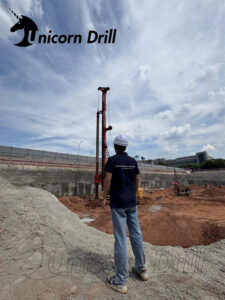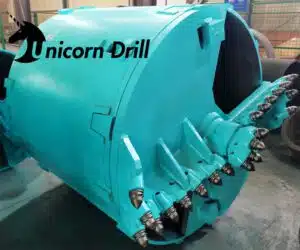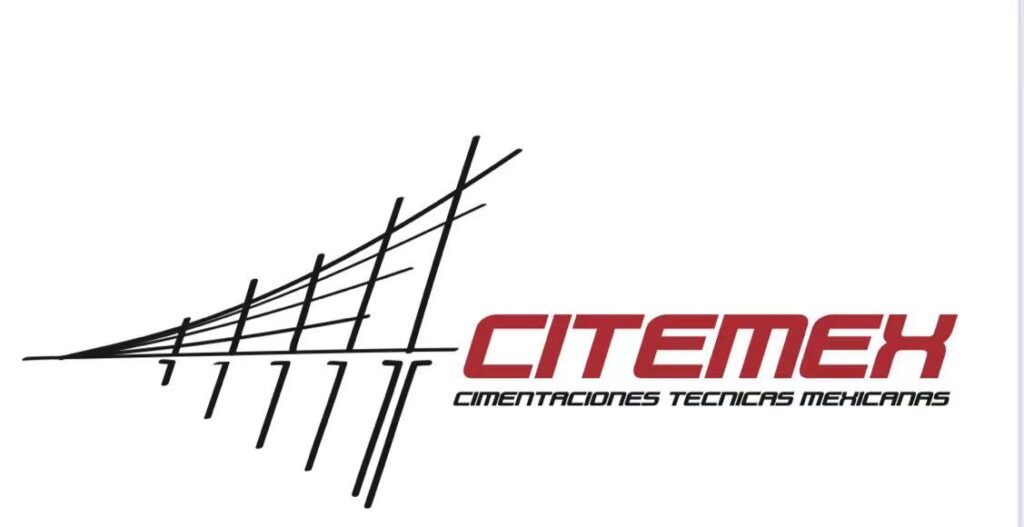Introduction:
When rotary drilling rigs drill into mudstone or silt layers, they often slip. That is, the pressurization action of the drilling rig is ineffective and drilling is impossible or difficult, thus affecting the construction progress and production efficiency. The following is an introduction to effective methods for drilling mudstone with rotary drilling rigs
1.Geological analysis:

2.Cause of slipping:
During the construction process, if a dry hole is drilled into mudstone, it is more efficient to use an auger drill. It can also be drilled if a double-bottomed sand bucket is used, but the load is larger; When water is encountered in the hole, slippage will occur immediately, so the drill will slip is directly related to water or mud, so the main reasons for mudstone slippage are composed of the following points: 1. The hardness of the mudstone; 2. The lubrication effect of water or mud; 3. The water absorption and softening of the mudstone, etc.
3.Different Drill tools
- When the auger bucket drills into mudstone in a water hole, as the mudstone softens when exposed to water, the cone at the front end of the auger bucket will be packed with mudstone muck, forming a whole, and the drilling tool will lose its drilling function and cannot continue to drill. , water or mud will enter between the drill bucket and the mudstone to lubricate, causing slippage.
- When using a double-bottom rock bucket to drill into a mudstone water hole, the pick drilling method is to use the alloy head at the front end to drill in. The alloy head can easily break into the mudstone, but because the alloy head at the front end is very short, it is difficult to fix the alloy head. The bit body must follow the cut. Because the bit body is too blunt, resistance is formed, causing the bit to break into the mudstone too shallowly, and the mudstone is cementitious, so the crushing effect cannot be achieved. In addition, during the drilling process, a large amount of silt will adhere to the outer barrel wall of the drill bucket, causing “floating drilling”. Therefore, drilling cannot continue and slippage occurs.
- Through the above analysis, mudstone has good cementation and is not easily broken. It requires sharper tools, deeper drilling and lower cutting resistance to achieve the cutting and breaking effect.
4.Approach
Defects on the drill tools, such as the center positioning tip is not easy to be too long, wide or blunt, the angle of the tooth tips and the gap between the tooth seats, the diameter of the side teeth, the model of the bucket teeth or the wear of the tooth tips, it is best to improve them , let the height difference between the tooth tip length and reduce the contact area
- The diameter of the sand fishing bucket. The larger the diameter of the drill bucket, the larger the contact area and the more difficult it is to overcome slippage. Therefore, if the pile diameter is larger, a smaller diameter drill bucket can be used for drilling first.
- Overcome slip analysis As mentioned earlier, the main reason is slip caused by water or mud lubrication, so as long as the softened mudstone and surface water or mud are overcome, mud rock slip can be overcome! After overcoming the problem, continue drilling with pressure to minimize the idling of the power head in the hole, so that water or mud cannot enter the cutting surface. In this way, the tooth tip is always in contact with the dry ground, and drilling can be normal.
- Operational control is very important. Since mudstone is hard and has good cementability, it is not easy to cut in under the lubrication of water. First, raise the power head to the highest level, and then control the power head to rotate slowly. The pressurization speed is slow and Continuously, the power head and the pressurization speed must be well matched. If the pressurization stroke is completed and the mudstone is not cut into, raise the power head again and continue drilling until the geological load is increased. After that, drilling must be continued. When the load is too heavy, it is necessary to Lifting the power head reduces the load and thereby protects drill components. When the load is reduced, the pressure must be continued to prevent water or mud from entering the cut surface and reducing the friction coefficient.
- Slip classification When drilling, due to the softening of the mudstone, two types of slipping phenomena will occur. One is bottom slipping, which is also the so-called slipping phenomenon when drilling into the mud layer; and the other is mudstone slipping, because the mudstone is relatively small. It is difficult to drill and cut when hard, but it will slip when lubricated by water or mud. There is a difference between the two slips, so the type of slip must be distinguished in order to deal with it effectively.
- Dealing with slipping. It is very important to distinguish the two kinds of slipping, and the treatment methods are also different. If the mudstone is softened and the support is slipping, reverse the forward pressure and pressurize to overcome it. If the mudstone is hard and the friction coefficient is reduced by water, the above-mentioned method can be used to overcome the slipping. A series of integration methods can overcome this problem. The strength of mudstone varies greatly due to differences in cementing materials and weathering degrees. Therefore, not all mudstones can be drilled by cutting.


 Defects on the drill tools, such as the center positioning tip is not easy to be too long, wide or blunt, the angle of the tooth tips and the gap between the tooth seats, the diameter of the side teeth, the model of the bucket teeth or the wear of the tooth tips, it is best to improve them , let the height difference between the tooth tip length and reduce the contact area
Defects on the drill tools, such as the center positioning tip is not easy to be too long, wide or blunt, the angle of the tooth tips and the gap between the tooth seats, the diameter of the side teeth, the model of the bucket teeth or the wear of the tooth tips, it is best to improve them , let the height difference between the tooth tip length and reduce the contact area



